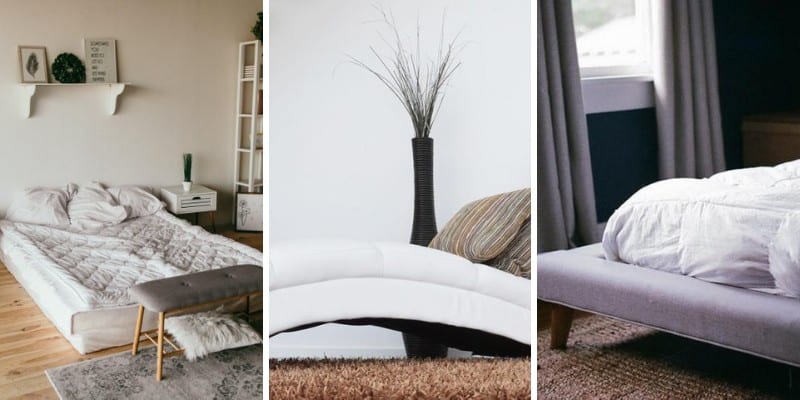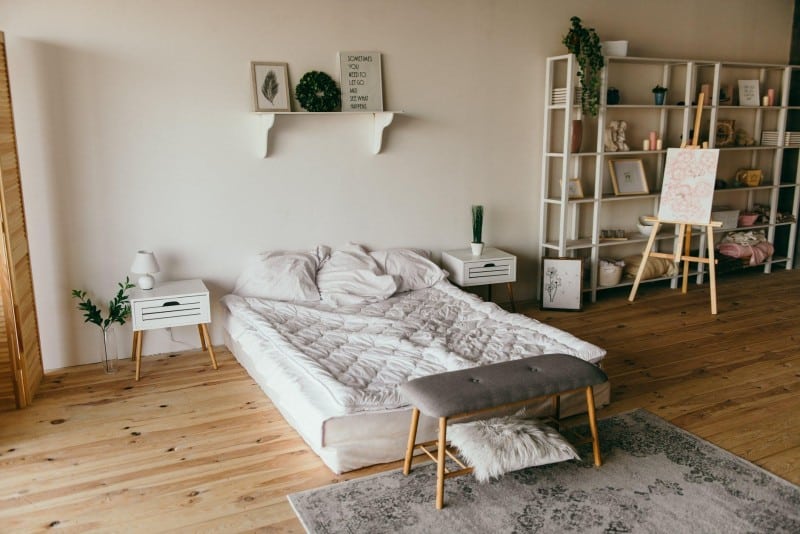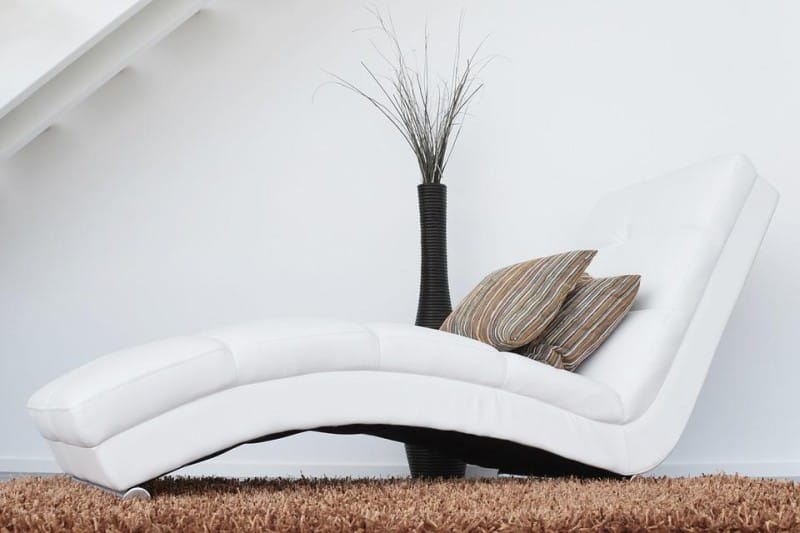Your bed is your main guide into the Land of Nod. But this piece of furniture is also bulky and may not fit in if you have a small room or live in a dorm. Don’t worry!

This article will show you five alternatives that are no worse than a traditional bed in terms of comfort and functionality.
Let’s see what they are.
#1 Futon Mattress
Futon mattresses got very popular thanks to their minimalistic design, which fits most loft and hi-tech apartments.
But this isn’t the only feature they have.
Sleeping on a futon — whether you put it on a frame or directly on the floor — can offer you many benefits:
- Good amount of sinkage. Many futon mattresses are at least 4-inch thick, which should be enough to contour a side sleeper’s body without creating stiffness and discomfort.
- Cooler sleep. Futons have a simple construction. Usually, they consist of a supportive foam pad quilted with a fiber pillow top. Fiberfill has high thermal conductivity and is more breathable than a solid foam mattress, which means you will sleep cooler.
- Adjustable comfort. You can also stack a couple of futons to improve your comfort level, and it’s likely to be still cheaper than buying an average memory foam bed.
Note that Japanese futons are more expensive and usually require dry-cleaning because they may have wool or cotton fluff as the fill, which can become a turn-off for some.
#2 Hard Floor Bed

You can arrange a sleeping spot right on the floor. All you need to do is get rid of your bed frame and throw a mattress right there.
Alternatively, you can buy a sleeping bag and a thin foam pad to make an even more portable and compact sleeping area.
What you should be aware of, though, is that sleeping on the floor isn’t recommended for older people. As we age, our bones become weaker. Sleeping on the floor makes it harder to get up from this so-called bed and may increase the risk of traumas or fractures.
#3 Air Mattress
An airbed is a great alternative to a traditional bed. The modern market can offer you hundreds of different models that are no worse than average memory foam or innerspring mattresses. You can take a look at some of the best air mattresses reviewed in this article.
Now, beds of this type have some advantages over traditional beds:
- They’re compact. In a deflated state, of course. They can be a space-saving solution for one-bedroom apartments and studios, as you can just deflate them every morning and put inside a wardrobe.
- They’re affordable. A high-end airbed will cost you as much as an entry-level foam mattress but may be more durable and more comfortable.
- They sleep cool. Basically, you sleep atop the layer of air, and your body heat isn’t trapped anywhere, so you won’t wake up dripping in your sweat.
#4 Recliner Chair
A recliner chair is an excellent bed alternative for those who are recovering from surgeries or have some chronic health issues.

The thing is, it works similarly to adjustable beds, elevating the head section. A study on patients with sleep apnea showed that a mild incline can alleviate apnea symptoms and thus improve sleep without interfering with sleep structure.
People with the following conditions can benefit from sleeping in a recliner the most:
- Heartburn or acid reflux. Sleeping with an elevated upper body places the esophagus higher than the stomach. This way, gastric juices cannot flow into the stomach and cause irritation.
- High blood pressure. Some recliners have a zero-gravity option which lifts legs to the heart level, which allows the heart to pump blood easier and reduce blood pressure.
- Chronic pain. A reclining position can remove some load from the lower back area and thus prevent stiffness.
Keep in mind, though, that we’re all different and these benefits may not apply to everyone.
#5 Hammock
Finally, you can hang a hammock and sleep in it. Even though installing a hammock inside your bedroom may sound weird, this can result in the most therapeutic sleep experience in your life.
Especially if you suffer from insomnia.
A study conducted on 12 adult men found that napping in a hammock helped them fall asleep and enter the deep stage of sleep faster than those who took a nap on a still bed.
Even though it’s a small sample for research, scientists think that it’s very promising and can be used for people with mild and moderate insomnia as an alternative treatment.
Along with that, a hammock can relax your spine, particularly neck and lower back areas. Plus, it sleeps cooler even compared to an airbed. So, if you’re a hot sleeper, you should give this option a try.
Related Posts
- Comparison of Duvet vs Quilt vs Blanket: Cozy Bedding Explained
- Pros and Cons of Electric Blankets and Safety Guide
- Comparison of Murphy Bed vs Sleeper Sofa For Your Home
- Different Types of Doors for Closets – Design Ideas with Pictures
- Two Color Combination for Bedroom Walls – Design Ideas
- White and Gold Bedroom Design Ideas With Unique Photos
Leave a Reply